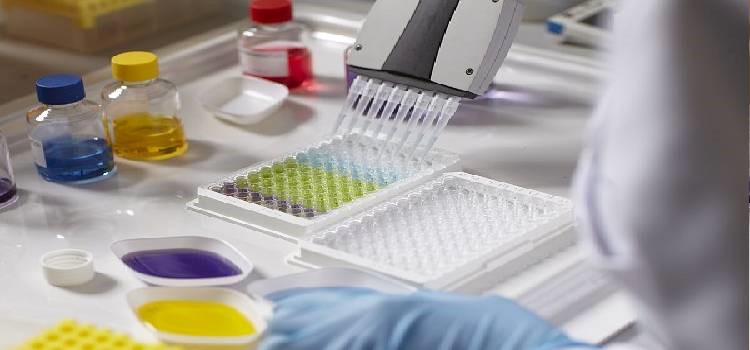
Nerve Repair and Regeneration Market by Product (Neurostimulation and Neuromodulation Devices and Biomaterials), by Application (Neurostimulation and Neuromodulation Surgeries, Direct Nerve Repair / Neurorrhaphy, Nerve Grafting, Stem Cell Therapy, and Others) and by End User (Hospitals, Specialty Clinics, and Others)- Global Opportunity Analysis and Industry Forecast 2024-2030
Market Definition
The Nerve Repair and Regeneration Market size was valued at USD 8.35 billion in 2023 and is predicted to reach USD 15.98 billion by 2030 with a CAGR of 9.7% from 2024-2030. Nerve repair and regeneration refer to the process of restoring the function of damaged nerves. This process involves the regrowth of nerve fibers and the reconnection of the damaged nerve cells. Nerve regeneration can occur spontaneously, but it is often incomplete, resulting in long-term functional deficits. Researchers are studying ways to improve nerve regeneration by using various techniques, including nerve grafting, electrical stimulation, and drug therapy. Nerve regeneration has the potential to restore normal function to patients suffering from nerve damage, such as those with spinal cord injuries, peripheral nerve injuries, and traumatic brain injuries.
Market Dynamics and Trends
Increasing demand for nerve repair and regeneration owing to rising geriatric population across the world along with high volume of nerve injury cases amongst them such as acute spinal cord injuries is driving the growth of the nerve repair and regeneration market.
Also, increasing adaption of nerve repair and regeneration therapies due to high prevalence of neurological diseases across the world such as Friedreich ataxia, Huntington's disease, Lewy body disease and Parkinson's disease is further driving the market.
Moreover, advancements in nerve repair and regeneration devices are further contributing to the growth of the market. These technological improvements include the integration of enhanced sensors, larger device memory, and external signals to improve closed loop synchronizations.
Additionally, manufacturers are increasing the number of electrodes in nerve repair and regeneration devices to improve stimulation, resulting in more effective treatments for patients with nerve damage. However, high cost of nerve repair and regeneration treatments and limited success rate of nerve regeneration procedures are the factors restraining the growth of the market.
On the other hand, the continued progress in stem cell therapy is expected to provide numerous growth opportunities for the nerve repair and regeneration market in the near future. Stem cell therapy leverages the body's natural capacity to heal itself by introducing stem cells that can replace cells that were damaged due to chemotherapy, radiation, or other causes.
Market Segmentations and Scope of the Study
The nerve repair and regeneration market are segmented on the basis of product, application, end user and geography. On the basis of product, the market is classified into neurostimulation and neuromodulation devices and biomaterials. The neurostimulation and neuromodulation devices market is further sub-segmented into internal neurostimulation device and external neurostimulation device. The Internal neurostimulation device market is again divided into spinal cord stimulation (SCS), deep brain stimulation (DBS), vagus nerve stimulation (VNS), sacral nerve stimulation (SNS) and gastric electrical stimulation (GES). The external neurostimulation device is again divided into transcutaneous electrical nerve stimulation (TENS) and transcranial magnetic stimulation (TMS). The biomaterials market is further sub-segmented into nerve conduit, nerve protector, nerve connector and other biomaterials. On the basis of application, the market is categorized into neurostimulation and neuromodulation surgeries, direct nerve repair / neurorrhaphy, nerve grafting, stem cell therapy and others. The direct nerve repair / neurorrhaphy market is further sub-segmented into epineural repair, perineural repair and group fascicular repair. The nerve grafting market is further sub-segmented into autografts, allografts and xenografts. On the basis of end user, the market is classified into hospitals, specialty clinics and others. Geographic breakdown and analysis of each of the aforesaid segments includes regions comprising of North America, Europe, Asia-Pacific, and RoW.
Geographical Analysis
North America maintains a dominant position in the nerve repair and regeneration market, and this trend is expected to persist in the forecast period. This is attributed to the availability of technologically advanced nerve repair and regeneration devices within the region, facilitated by a well-established healthcare system and supportive health insurance coverage. The presence of cutting-edge medical technology and infrastructure enables healthcare providers in North America to offer state-of-the-art treatments for nerve repair and regeneration, driving market growth.
Additionally, the increasing incidence of neurological disorders, such as dementia and Alzheimer's disease, further propels market expansion in North America. In 2022, the Alzheimer's Association reported that over 6 million people in the USA are afflicted with Alzheimer’s disease, necessitating nerve repair and regeneration treatments. The prevalence of such neurological conditions underscores the significant demand for innovative therapies and devices aimed at restoring nerve function and improving patients' quality of life.
Moreover, ongoing research and development initiatives, coupled with robust investments in healthcare innovation, contribute to the growth of the nerve repair and regeneration market in North America. Academic institutions, medical centers, and biotechnology companies in the region are actively engaged in advancing understanding and treatment options for nerve injuries and disorders. This collaborative effort fosters the development of novel therapies and technologies, driving market expansion and addressing unmet medical needs.
On the other hand, The nerve repair and regeneration market in Asia Pacific is experiencing significant growth, driven by the rising prevalence of neurological disorders and injuries across Asia Pacific countries. This trend is particularly pronounced in countries like China, India, and Japan, which have large populations and rapidly aging demographics.
With Japan alone estimated to have 36.23 million individuals aged over 65, as per 2023 data from the World Economic Forum, the need for effective nerve repair and regeneration therapies is becoming increasingly urgent. Additionally, the Asia Pacific region is witnessing a surge in research and development activities focused on nerve repair and regeneration. Academic institutions, research centers, and biotechnology companies are actively engaged in exploring novel therapeutic approaches and technologies for treating nerve injuries and neurological disorders. This research-driven innovation landscape fuels the development of new treatment modalities and devices, driving market growth and addressing unmet medical needs in the region.
Competitive Landscape
The nerve repair and regeneration market are comprising of various market players such as Medtronic plc., Boston Scientific Corporation, Abbott Laboratories, Axogen Corporation, Baxter, Integra LifeSciences Corporation, Neuronetics Inc., Nevro Corp, NeuroPace Inc. and Polyganics. These market players are aggressively applying for government approvals and launching new products to maintain their dominance in the nerve repair and regeneration market.
For instance, in April 2022, Boston Scientific Corporation received approval from US food and drug administration (FDA) for its latest image-guided programming software, Vercise Neural Navigator with Stimview XT. It will provide physicians with real time visualization of brain stimulation in therapy of Parkinson’s disease or essential tremor patients.
Moreover, in March 2021, Abbott Laboratories launched the world’s first virtual clinic for neuromodulation patients in USA called Neurosphere for remote therapy and management.
Key Benefits
-
The nerve repair and regeneration market report provide the quantitative analysis of the current market and estimations through 2024-2030 that assists in identifying the prevailing market opportunities to capitalize on.
-
The study comprises a deep dive analysis of the nerve repair and regeneration market trend including the current and future trends for depicting the prevalent investment pockets in the market.
-
The information related to key drivers, restraints and opportunities and their impact on the nerve repair and regeneration market is provided in the report.
-
The competitive analysis of the market players along with their market share in the nerve repair and regeneration market.
-
The SWOT analysis and Porters Five Forces model is elaborated in the study.
-
Value chain analysis in the market study provides a clear picture of the stakeholders’ roles.
Key Market Segments
By Product
-
Neurostimulation and Neuromodulation Devices
-
Internal Neurostimulation Device
-
Spinal Cord Stimulation (SCS)
-
Deep Brain Stimulation (DBS)
-
Vagus Nerve Stimulation (VNS)
-
Sacral Nerve Stimulation (SNS)
-
Gastric Electrical Stimulation (GES)
-
-
External Neurostimulation Device
-
Transcutaneous Electrical Nerve Stimulation (TENS)
-
Transcranial Magnetic Stimulation (TMS)
-
-
Biomaterials
-
Nerve Conduit
-
Nerve Protector
-
Nerve Connector
-
Other Biomaterials
-
-
By Application
-
Neurostimulation and Neuromodulation Surgeries
-
Direct Nerve Repair / Neurorrhaphy
-
Epineural Repair
-
Perineural Repair
-
Group Fascicular Repair
-
-
Nerve Grafting
-
Autografts
-
Allografts
-
Xenografts
-
-
Stem Cell Therapy
-
Others
By End User
-
Hospitals
-
Specialty Clinics
-
Others
By Region
-
North America
-
The U.S.
-
Canada
-
Mexico
-
-
Europe
-
The U.K.
-
Germany
-
France
-
Italy
-
Spain
-
Denmark
-
Netherlands
-
Finland
-
Sweden
-
Norway
-
Russia
-
Rest of Europe
-
-
Asia-Pacific
-
China
-
Japan
-
India
-
South Korea
-
Australia
-
Indonesia
-
Singapore
-
Taiwan
-
Thailand
-
Rest of Asia-Pacific
-
-
Rest of the World (RoW)
-
Latin America
-
Middle East
-
Africa
-
REPORT SCOPE AND SEGMENTATION:
|
Parameters |
Details |
|
Market Size in 2023 |
USD 8.35 Billion |
|
Revenue Forecast in 2030 |
USD 15.98 Billion |
|
Growth Rate |
CAGR of 9.7% from 2024 to 2030 |
|
Analysis Period |
2023–2030 |
|
Base Year Considered |
2023 |
|
Forecast Period |
2024–2030 |
|
Market Size Estimation |
Billion (USD) |
|
Growth Factors |
|
|
Countries Covered |
28 |
|
Companies Profiled |
10 |
|
Market Share |
Available for 10 companies |
|
Customization Scope |
Free customization (equivalent to up to 80 working hours of analysts) after purchase. Addition or alteration to country, regional, and segment scope. |
|
Pricing and Purchase Options |
Avail customized purchase options to meet your exact research needs. |
KEY PLAYERS
-
Medtronic plc.
-
Boston Scientific Corporation
-
Abbott Laboratories
-
Axogen Corporation
-
Baxter
-
Integra LifeSciences Corporation
-
Neuronetics Inc.
-
Nevro Corp
-
NeuroPace Inc.
-
Polyganics




 Speak to Our Analyst
Speak to Our Analyst


































